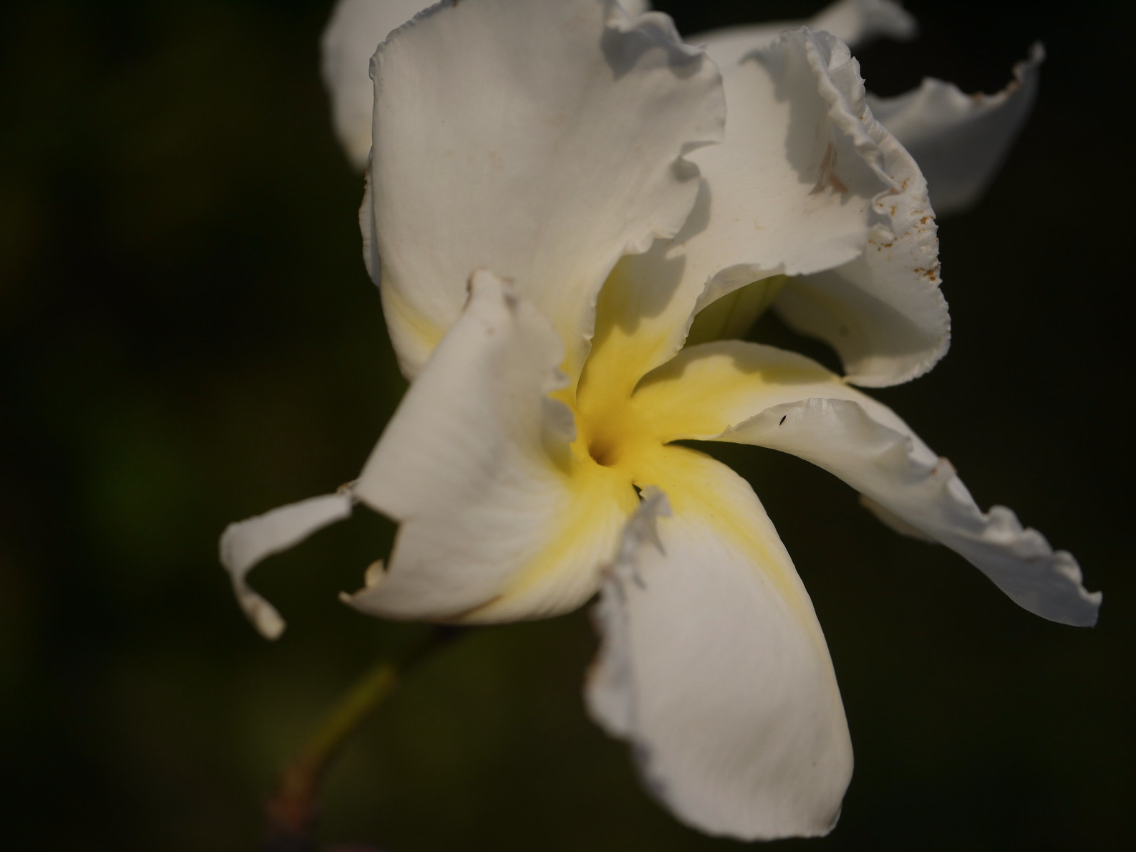Teach This Poem, though developed with a classroom in mind, can be easily adapted for remote-learning, hybrid-learning models, or in-person classes. Please see our suggestions for how to adapt this lesson for remote or blended learning. We have also noted suggestions when applicable and will continue to add to these suggestions online.

Look closely at the image of a moonlily.
The following activities and questions are designed to help your students use their noticing skills to move through the poem and develop their thinking about its meaning with confidence, using what they’ve noticed as evidence for their interpretations. Read more about the framework upon which these activities are based.
- Warm-up: Look closely at the image of a moonlily. What do you notice? What does this lily make you think of? Why?
- Before Reading the Poem: Look over this brochure about wild horses. What do you notice about the different horses? What colors do you notice? What does this make you think?
- Reading the Poem: Silently read the poem “Moonlily” by Marilyn Nelson. What do you notice about the poem? Note any words or phrases that stand out to you or any questions you might have.
- Listening to the Poem (enlist two volunteers to read the poem aloud): Listen as the poem is read aloud once, and watch a video of the poet reading the poem. What did you learn from the video that you could not have learned by just reading the poem? Write down any additional words and phrases that stand out to you.
- Small-group Discussion: Share what you noticed about the poem with a small group of students. Based on the materials from the beginning of class, and the video, how does the poem connect to the resources? How would you describe the point of view from which this poem is written?
- Whole-class Discussion: Read the last three lines of the poem: “The bell produces metamorphosis / Still hot and flushed, we file back to our desks, / one bay in a room of palominos”? What is a metamorphosis? How did the students change from their play during recess to “one bay in a room of palominos?” What do you think might be the point the poet is trying to make with this change?
- Extension for Grades 7-8: In honor of Black History Month, read more Black poets. Work with your class or school to create an anthology. You can find more information here. (Teachers, your students might enjoy this playlist of Black poets from #TeachLivingPoets.)
- Extension for Grades 9-12: (Teachers, assign students/groups a school of poetry to research. You may have to scroll to find the list of schools.) In honor of Black History Month, research your assigned school of poetry and share your presentation with the class. Be sure to detail your assigned school’s accomplishments and triumphs.
“Black girls’ embodied musical play creates an autonomous and secluded zone of worthiness, even though they are the ones to pass down the earliest formations of a shared Black popular culture and imagined community in their hidden musicianship.” Read “The Magic of Black Girls’ Play” from the New York Times.
